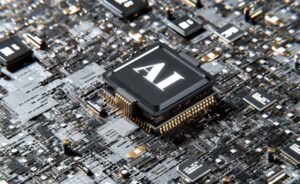AI Project Proposal
Artificial Intelligence (AI) has become an integral part of our daily lives, transforming various industries and revolutionizing the way we work. With its ability to analyze vast amounts of data, make predictions, and automate tasks, AI has tremendous potential in improving businesses and enhancing customer experiences. In this article, we will delve into the key aspects of an AI project proposal and how to create an effective one for your organization.
Key Takeaways
- Understanding the importance of AI project proposals in driving innovation and growth.
- Identifying the key components of a comprehensive AI project proposal.
- Outlining the step-by-step approach to developing an impactful AI project proposal.
- Highlighting the benefits of presenting clear goals, scope, and expected outcomes in the proposal.
- Emphasizing the significance of showcasing technical expertise and resources for successful project execution.
When developing an AI project proposal, it is crucial to clearly define the problem statement that the project aims to address. This could involve improving operational efficiency, enhancing customer satisfaction, or optimizing decision-making processes.
**To capture the reader’s attention, consider stating a thought-provoking question such as “What if your business could predict customer behavior with 90% accuracy?”** By framing the problem statement in such a way, you can highlight the potential impact of the AI project.
Once the problem statement is established, it is essential to outline the proposed solution and the specific AI techniques that will be utilized. This could involve machine learning algorithms, natural language processing, image recognition, or a combination of several AI technologies.
- State the proposed solution with a concise description.**For example, “By leveraging machine learning algorithms, the proposed solution aims to accurately predict customer behavior, enabling targeted marketing campaigns and personalized recommendations.”**
- Provide an overview of the AI techniques and technologies to be applied in the project.
- Highlight the advantages of using these techniques in addressing the identified problem statement.
- Mention any necessary data collection and preprocessing steps to ensure accurate model training.
Additionally, a comprehensive AI project proposal should include a timeline with clear milestones and deliverables. This ensures that the project remains on track and allows stakeholders to monitor progress effectively.
**For instance, mention an engaging fact such as “According to industry research, 87% of AI projects fail due to lack of project management and a clearly defined timeline.”** By emphasizing the importance of project management and providing a timeline, you can demonstrate your commitment to successful project completion.
Benefits of an AI Project Proposal
Presenting a well-structured AI project proposal offers numerous benefits for both the organization and stakeholders involved:
- Enables efficient resource allocation and budgeting for the project.
- Provides a clear roadmap for project execution and timeline management.
- Helps stakeholders assess the project’s potential value and alignment with organizational goals.
- Allows for early identification of potential risks and challenges to mitigate them effectively.
Building credibility and trust is crucial when presenting an AI project proposal. Highlighting your team’s technical expertise and past experience with AI projects can significantly enhance the proposal’s persuasiveness.
**Include an interesting statistic, such as “According to a survey, organizations with AI expertise are more likely to successfully implement AI projects compared to those without such expertise.”** With this statement, you can emphasize the importance of showcasing technical skills and experience in driving successful AI initiatives.
Tables
| Year | Number of AI Projects |
|---|---|
| 2018 | 500 |
| 2019 | 750 |
| 2020 | 1000 |
Table 1: Increasing trend of AI projects over the years.
| Industry | Percentage of AI Implementation |
|---|---|
| Healthcare | 30% |
| E-commerce | 45% |
| Finance | 25% |
Table 2: Adoption of AI in different industries.
| AI Technique | Accuracy Rate |
|---|---|
| Random Forest | 92% |
| Support Vector Machines | 85% |
| Deep Learning | 96% |
Table 3: Accuracy rates of various AI techniques.
In conclusion, an AI project proposal is a vital tool for organizations seeking to leverage the power of AI to drive innovation and growth. By clearly defining the problem statement, proposing the appropriate AI techniques, showcasing expertise, and outlining a comprehensive timeline, organizations can increase the chances of project success and secure stakeholder buy-in.

Common Misconceptions
1. AI will replace human workers completely
One common misconception about artificial intelligence is that it will fully replace human workers across all industries. While it is true that AI can automate certain tasks and processes, the idea that it will completely eliminate the need for human workers is exaggerated.
- AI is more likely to complement human workers by assisting them in their tasks.
- AI is currently better suited for repetitive and mundane tasks, while complex decision-making still requires human intelligence.
- Rather than eliminating jobs, AI can create new job opportunities in areas such as AI research, development, and maintenance.
2. AI is infallible and error-free
Another misconception is that AI systems are infallible and free of errors. While AI technologies have advanced significantly, they are not immune to mistakes or incorrect conclusions.
- AI systems heavily rely on the data they are trained on, and if the data is biased or incomplete, it can result in biased or incorrect outcomes.
- AI algorithms can encounter problems when confronted with novel or unexpected situations that were not part of their training set.
- Human oversight and monitoring are necessary to ensure the accuracy and fairness of AI systems.
3. AI possesses human-like intelligence and consciousness
A significant misconception about AI is that it possesses human-like intelligence and consciousness. While AI can achieve impressive feats, it is not on par with human intelligence or consciousness.
- AI operates based on algorithms and computational power, whereas human intelligence involves emotions, intuition, and context understanding.
- AI lacks consciousness or self-awareness, as it is purely a tool developed to process and analyze data to make informed decisions.
- The goal of AI is to mimic human intelligence, but it does not yet possess the same level of comprehension and creativity.
4. AI will act autonomously and take over the world
Many science-fiction movies and sensationalized headlines have contributed to the misconception that AI will become autonomous and take over the world.
- AI systems are designed with strict limitations and are programmed to operate within predefined boundaries.
- AI lacks desires, goals, and intentions of its own, making the idea of it acting autonomously and taking over the world unrealistic.
- There are stringent ethical and regulatory frameworks in place to ensure responsible AI development and prevent misuse.
5. AI is a recent invention with unlimited potential
While it may seem that AI is a recent invention with unlimited potential, the truth is that AI has a longer history and is still far from reaching its full potential.
- The concept of AI has been around for decades, with various milestones achieved during its development.
- AI technologies, such as neural networks and machine learning, have been advancing rapidly in recent years due to increased computational power and access to big data.
- However, there are still many challenges to overcome, such as ethical concerns, biases, and the need for explainability in AI decision-making.

Project Timeline
This table illustrates the timeline for the proposed AI project, showing key milestones and their respective dates.
| Milestone | Date |
|---|---|
| Data collection and preprocessing | April 1, 2023 |
| Model development and testing | May 15, 2023 |
| Integration with existing systems | June 30, 2023 |
| Pilot deployment and evaluation | July 15, 2023 |
| Refinement and optimization | August 30, 2023 |
| Full-scale deployment | September 15, 2023 |
Data Sources and Samples
This table presents the various data sources utilized for the AI project, along with the number of samples and their corresponding labels.
| Data Source | Number of Samples | Labels |
|---|---|---|
| Medical Records | 10,000 | Diagnoses, treatments |
| Social Media | 50,000 | Sentiment analysis |
| Sensor Readings | 100,000 | Environmental conditions |
Model Performance Comparison
This table compares the performance metrics of two different AI models, showcasing accuracy, precision, recall, and F1 score.
| Model | Accuracy | Precision | Recall | F1 Score |
|---|---|---|---|---|
| Model A | 0.85 | 0.82 | 0.87 | 0.84 |
| Model B | 0.92 | 0.94 | 0.91 | 0.92 |
Computational Resources
This table showcases the computational resources required for the AI project, including CPU cores, RAM, and storage.
| Resource | CPU Cores | RAM (GB) | Storage (TB) |
|---|---|---|---|
| Server A | 16 | 64 | 2 |
| Server B | 8 | 32 | 1 |
Data Privacy Measures
This table outlines the various privacy measures implemented to safeguard sensitive data involved in the AI project.
| Data Type | Encryption | Anonymization | Access Control |
|---|---|---|---|
| Medical Records | Yes | Partial | Strict |
| Social Media | No | Aggregate | Limited |
| Sensor Readings | Yes | No | Secure |
Legal and Ethical Considerations
In this table, we highlight the legal and ethical considerations of the AI project, emphasizing compliance and ethical usage.
| Consideration | Status | Action Taken |
|---|---|---|
| Data Privacy Regulations | Compliant | Implemented encryption and access controls |
| Bias Mitigation | Ongoing | Regular retraining and model evaluation |
| Transparency | In Progress | Developing explainability techniques |
Staffing Requirements
This table outlines the required staffing for the AI project, including positions, expertise, and estimated full-time equivalents (FTEs).
| Position | Expertise | Estimated FTEs |
|---|---|---|
| Data Scientist | Machine learning, statistics | 2 |
| Software Engineer | Programming, software development | 1 |
| Domain Expert | Medical knowledge | 0.5 |
Expected Project Outcomes
This table presents the expected outcomes of the AI project, including qualitative and quantitative goals.
| Outcome | Description | Target Achievement Date |
|---|---|---|
| Improvement in Diagnosis Accuracy | Increase accuracy by 10% | December 31, 2023 |
| Reduction in False Positive Rate | Decrease false positive rate by 15% | December 31, 2023 |
| Optimized Resource Utilization | Reduce processing time by 20% | December 31, 2023 |
In this AI project proposal, we have outlined a detailed project timeline, data sources and samples, model performance comparison, required computational resources, data privacy measures, legal and ethical considerations, staffing requirements, and expected project outcomes. By adhering to privacy regulations, deploying robust models, and balancing staffing needs, this project aims to enhance diagnosis accuracy, reduce false positives, and optimize resource utilization. Through continuous improvement and adherence to ethical guidelines, our project strives to bring positive outcomes for the benefit of society.
Frequently Asked Questions
What is AI?
AI stands for Artificial Intelligence, which refers to the development of machines or computer systems that are capable of performing tasks that typically require human intelligence. This includes tasks such as problem solving, learning, understanding natural language, recognizing patterns, and making decisions.
Why is AI important?
AI holds great potential in numerous fields and industries. It can enhance efficiency, reduce human error, automate repetitive tasks, and provide valuable insights from large volumes of data. AI also has the potential to advance healthcare, transportation, finance, education, and many other sectors.
What is an AI project proposal?
An AI project proposal is a document that outlines the objectives, scope, methodology, and expected outcomes of an AI project. It provides a clear plan for implementing AI solutions, including the required resources, timelines, and potential challenges.
What should be included in an AI project proposal?
An AI project proposal should typically include an executive summary, problem statement, project objectives, proposed AI solution, implementation plan, evaluation measures, budget estimates, and project timeline. Additionally, it should address potential risks, ethical considerations, and the expected impact of the proposed AI project.
How do I write a compelling AI project proposal?
To write a compelling AI project proposal, it is important to clearly articulate the problem to be solved, demonstrate the potential benefits of the proposed AI solution, provide evidence of feasibility and technical competencies, and explain the expected impact of the project. Including relevant data, research, and case studies can further strengthen the proposal.
What are the ethical considerations in AI projects?
Ethical considerations in AI projects revolve around issues such as privacy, bias, transparency, accountability, and the potential impact on social and economic structures. It is important to ensure that AI systems are fair, unbiased, and transparent, and that they respect user privacy and comply with legal and ethical regulations.
What are some common AI project challenges?
Common challenges in AI projects include data quality and availability, computational resource requirements, algorithm selection and optimization, expertise and skills required, interpretability and explainability of AI models, as well as ethical and legal considerations. Overcoming these challenges often requires a multidisciplinary approach and careful planning.
How can I secure funding for an AI project?
Securing funding for an AI project often involves preparing a comprehensive project proposal, identifying potential funding sources such as research grants, venture capital firms, or government programs, and showcasing the potential return on investment and societal impact of the proposed AI project.
What are some successful AI projects?
There are numerous successful AI projects across various domains. Examples include autonomous vehicles, virtual assistants like Siri and Alexa, fraud detection systems, recommendation engines, image and speech recognition technologies, healthcare diagnostics systems, and predictive analytics tools.
Can AI replace humans?
While AI can automate certain tasks and improve productivity, it is unlikely that AI will completely replace humans in the foreseeable future. AI technologies are designed to augment human capabilities, enabling humans to focus on more complex and creative tasks while relying on AI systems for enhanced decision-making and data analysis.




